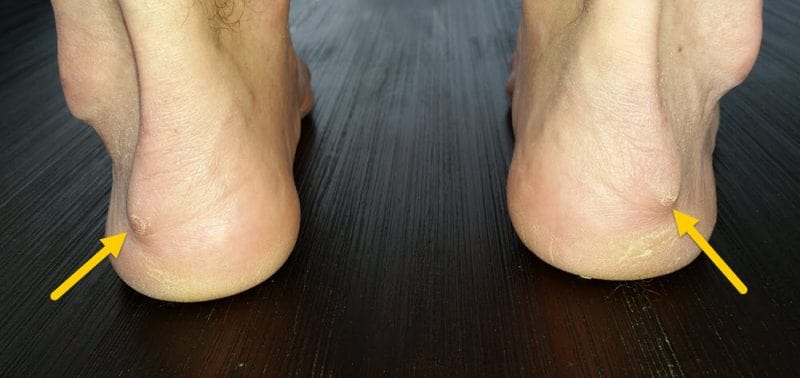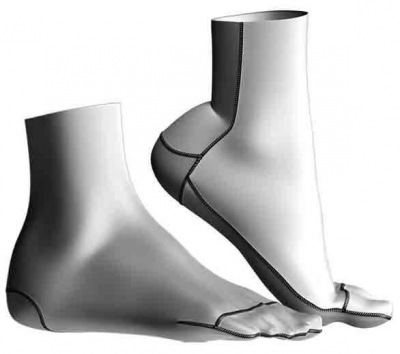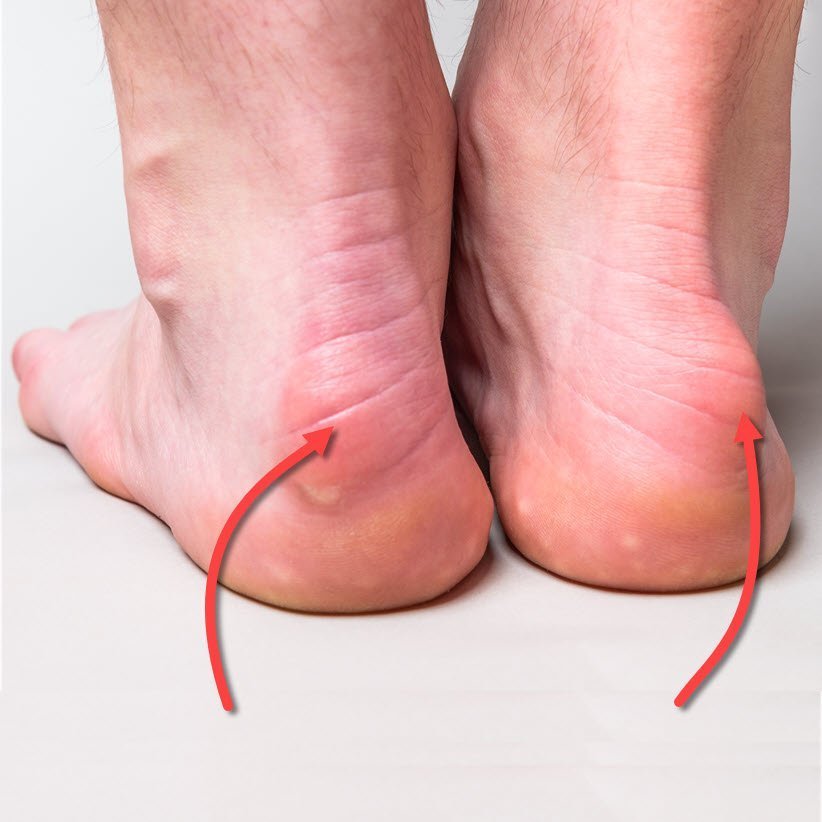This post stems from an email I received from a golfer who suffers recurrent heel blisters. He has a Haglunds deformity (also known as pump bump) on both heels.
We'll be talking about:
- ENGO Patches vs ArmaSkin socks
- Golf and walking
- Taking a systematic approach to combatting blisters
The Haglunds Deformity Heel Blister Question
I live in the UK and am a frequent golfer - playing in a range of climatic conditions and in different countries ranging from cold Scotland to warm South Africa, Florida and Turkey.
My preference is always to walk when playing golf. On average I play 18 holes of golf (roughly 4 to 6 miles) at least 3 times a week. Sometimes I have to carry my golf bag which weighs about 12 kilos. I play mainly hilly grass courses which are normally soft underfoot.
I have a Haglund on each of my heels which are not sufficiently serious enough or large enough to warrant any surgical intervention. However I do suffer from blisters and deroofing around the area of the Haglund on each heel.
The incidence level varies and is not confined to playing golf. Walking just in town, trail walking and the wearing of new shoes even for short distances can cause both blistering and deroofing. The use of Compeed dressings and similar products have proved ineffective - with the dressing soon becoming detached and the adhesive then causing a sticky mess on the sock material. I have used merino wool walking socks, double layer socks including 'Hilly' running socks with a polypropylene inner all to limited effect. I have also resorted to using some Hypafix Dressing fixing tape - which has had some good results if used with double layer socks.
Having applied most of your advice contained in your Blister Guide to varying degrees, my question in a nutshell is "which primary method of blister prevention would be more effective between ENGO patches and Armaskin socks?"It appears to me as a lay person that they work in totally different ways to combat the same issue.
Any advice would be most gratefully received.
My Reply
Hi Bruce!
You're spot on. The Armaskin socks and the ENGO Patches do work in different ways to combat the same issue - managing friction.
Basically, in combating blisters, you can do things like:
- Change the structural characteristics of your skin – That means adapting it to the loads it encounters, with training in your sport and building a little bit of callus over the lump. These things you will have already exhausted
- Reduce the repetitions – That means don't walk or play so much golf… not a great option!
- Reduce movement of the heel bone - Tight calf muscles would be relevant to blisters at the back of the heel, so calf stretches may help if you are tight.
- Reduce the coefficient of friction - which means pressure and friction. Let's me expand on this fourth point.

Haglunds deformity (also known as pump-bump)
With a Haglunds Deformity, Pressure Is An Issue Because Of The Lump.
But like all foot blisters, we can only do so much to reduce pressure - you still have to wear shoes and walk on your feet (unless you've found a way to walk around on your hands :)). So there is always going to be high-ish contact pressure from your shoe all around your foot. In reducing pressure at the back of your heel, all you can do is make sure the area is padded (no doubt you've done all you can here) or wear shoes with no back in them (not a solution for golf). Oh, or of course you can change the anatomy at the back of the heel to take away that bony lump (surgery). But remember, people still get blisters at the back of their heel even without Haglunds, so it may not be a 100% solution.

The anatomy of Haglunds deformity
That Takes Us To Friction.
When we walk, our foot bones don't stay exactly still in the shoe. There will be a movement differential between the bones of the foot and the shoe itself. Shoes and socks are made of high friction materials in an attempt to keep the foot still - which is good because your foot needs traction in the shoe for the mechanical efficiencies of gait. So the shoe grips the sock, and the sock grips the skin to provide this necessary traction. But that doesn't stop the bones moving within the foot. And so this is where the movement differential occurs. We call it shear stress which is the stretching within the skin.
Most people go fine with large and repetitive shear distortions within their skin and don't get blisters. But for some of us, the same shear stress is above the blister threshold of our skin. It's a very individual thing.
So, if we need to reduce the magnitude of shear distortions within our skin, and all of the above methods have failed , we need to manage friction - so that rather than the movement differential happening within our foot, it happens external to our foot. Basically, we need to make it more slippery by intelligently selecting materials that reduce the coefficient of friction. We need to encourage a bit of slippage either:
Between the Skin and Sock:
This is what lubricants do, but they have some significant downsides. Basically, they really do cut friction levels for a while, but after a time as it disperses into the sock, friction levels rise such that the rubbing that happens is abrasive. So the mechanics are there for blister development again, which will probably deroof.
Between Two Sock Layers:
This is double socks. Of them all, I think Armaskin does it best. Unlike other double-socks, these socks artificially increase the friction level between the skin and the sock, so that no matter how long you wear them, there is absolutely no movement against your skin. And in turn, the slippery outer of the Armaskin sock means that you can pretty much guarantee friction will be lowest between the two sock layers and this is where the movement differential will occur. This goes a long way to saving your skin from blisters.
Between the Shoe and Sock:
This is what ENGO Patches do. The way they manage friction is they significantly reduce the friction level between the shoe and the sock. In this way, they guarantee this is where the movement differential will happen - and so you don't get blisters. And because the friction level between the skin and sock is higher, it means the sock stays stuck to the skin and protects it from abrasion injury.
The strategy you find that suits you best will be in the other pros and cons of each product.
- With ENGO, they last a long time. Once they're in your shoe, you can virtually forget about them. You can wear them in any type of shoe and they are hidden in the shoe. But if they get waterlogged. they might loosen around the edge. Here's where you can buy ENGO Patches. The Heel Pack is the one to get, although you can use the large ovals in the 4-Pack.
- With ArmaSkin Socks, you can potentially wear them in any shoe. They are a bit trickier than normal socks to get on. And some people don't like the way they feel on the skin (I expected this to be an issue for me but it wasn't). You can get ArmaSkin socks here.

The main difference between the way these two products manage friction is ArmaSkin socks reduce friction all over, while ENGO Patches reduce friction just where the problem area is. You can read more about the benefits of targeted rather than global friction management here.
My Strongest Recommendation
My strongest recommendation for preventing heel blisters from a Haglunds deformity is ENGO Patches. Try them and feel free to let me know how you go.








